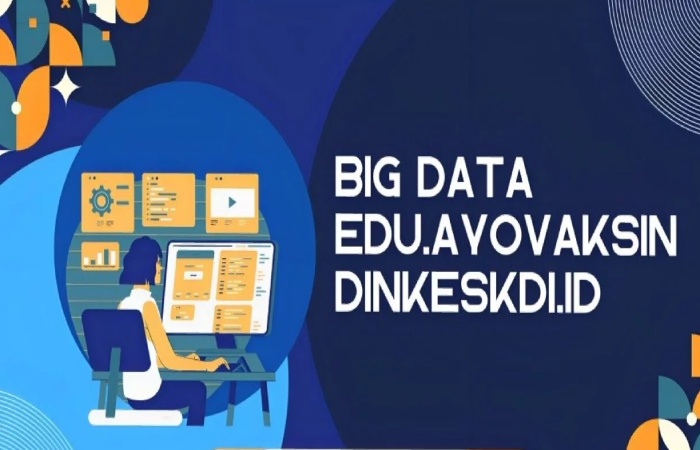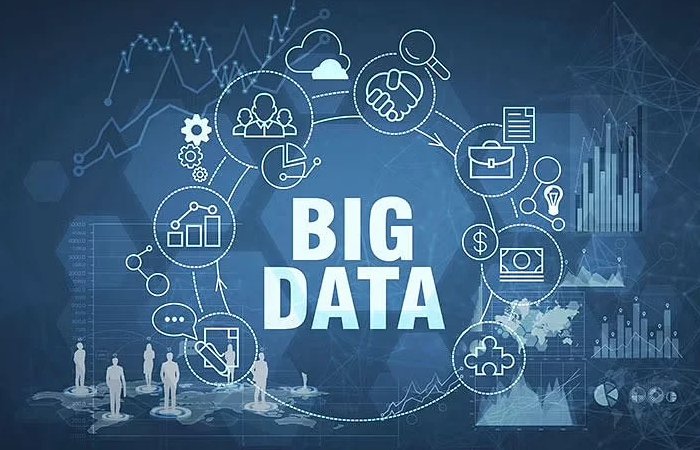Table of Contents
Intorduction

Big data edu.ayovaksindinkeskdi.id – The prominent data website edu.ayovaksindinkeskdi.id provides essential information in articles. Users will also not have to deal with any issues, as using and accessing the articles is very easy. The interface is simple, reliable, and contains accurate information. Even the dialect suits beginners, so understanding all its details will not be complicated.
So far, there are three articles in the catalog. On the one hand, it’s about big data analytics and fundamentals. The second part of the article is about the main trends of big data. The last and third parts deal with building a career through big data and skills requirements.
Prominent Data edu.ayovaksindinkeskdi.id in Big Data Analytics
This article was uploaded on April 14, 2023, and summarizes big data analytics. Explain how every online activity creates data. Whether interacting on social media, online shopping, or anything else – accessing something online will generate data. At the same time, it is essential to understand that data alone is insufficient. The correct procedure for analyzing and interpreting them is equally important because the result and insights can be a game-changer for the company.
Big data has three main characteristics: volume, variety, and velocity. Volume here is the amount of data generated, which is very large and never-ending. Second, speed relates to the pace of data generation, which is always increasing. Third, there is diversity that determines the types of data that are generated, which can be structured or unstructured data.
Benefits Of Using Data Analysis In Difficult Field
Big Data edu.ayovaksindinkeskdi.id also explains the need for data analysis and its benefits in difficult fields. For example, it is extremely useful for making better decisions because it provides accurate insights into customer behaviour, market trends and operational performance.
Another benefit of using data analytics is improving customer experiences, which is only possible because companies know customer behavior and preferences. But the biggest advantage of all is the competitive advantage that organizations can take advantage of. For example, it will help them by enabling them to make data-driven decisions faster and more accurately than the rest. Data analysis will also help identify new market opportunities, improve operations and open new revenue sources.
The Use of Big Data Edu.Ayovaksindinkeskdi.Id

The use of big data edu.ayovaksindinkeskdi.id requires a strategic approach that involves collecting, analyzing and interpreting large amounts of data to make informed decisions. Here are several ways to make effective use of big data in education.
Analyze Student Performance
Data Collection: Collect data on student performance, including grades, test scores, and attendance. Integrate information about individual learning styles, strengths and weaknesses.
Data Analysis: Use analytical tools to identify patterns and trends in student performance. Identify areas where students excel and struggle, allowing for targeted interventions.
Personal Learning
Data Collection: Collect data on student preferences, learning styles and progress in real time through educational technology platforms.
Data Analytics: Use predictive analytics to personalize learning experiences for individual learners. Adaptive learning platforms can dynamically modify content based on the learner’s strengths and weaknesses.
Early Intervention
Data Collection: Collect data on attendance, participation, and academic performance. Use projecting analytics to identify students at risk of falling behind.
Data analysis: Implement early intervention strategies based on identified risk factors. This may include additional classes, counseling, or targeted support programs.
Curriculum Development and Improvement
Data Collection: Collect data on student outcomes, course evaluations, and teacher performance.
Data Analysis: Analyze this data to determine successful teaching methods and areas for improvement. Use insights to improve the curriculum and ensure it meets students’ needs.
Resource Allocation
Data Collection: Collect data on facility use, course demand, and faculty workload.
Data Analytics: Use data analytics to improve resource allocation. Ensure classrooms, staff, and other resources are distributed efficiently to meet student requirements.
Predictive Analytics for Graduation Rates
Data Collection: Collect data on student demographics, academic history, and extracurricular activities.
Data Analytics: Use predictive analytics to predict graduation rates. Identify factors that underwrite to student success and implement strategies to improve overall graduation rates.
Improving Teacher Performance
Data Collection: Collect data on teacher-student interactions, student outcomes, and professional development.
Data Analysis: Analyze this data to evaluate teacher effectiveness. Identify areas that need additional training or support to improve teaching performance.
Parent Involvement and Communication
Data Collection: Utilize data on student progress, attendance, and behavior.
Data Analysis: Share relevant data with parents to keep them informed of their child’s academic journey. Use data to facilitate constructive communication between parents, teachers and students.
Continuous Improvement Through Feedback
Data Collection: Collect feedback from students, teachers, and parents through surveys and other means.
Data Analysis: Analyze feedback data to identify areas for improvement in teaching methods, curriculum and overall educational experience.
Ethical Considerations
Data Security: Implementes strong data security measures to protect confidential student information.
Privacy Compliance: Ensuring that data collection and use comply with privacy regulations and ethical standards.
Edu.Ayovaksindinkeskdi.Id Implementing strategies for big data in education requires collaboration between teachers, administrators, and technology experts. Regularly measure the effectiveness of these strategies and adjust them based on the evolving needs of the institution and its students.
Conclusion
Big Data Edu.Ayovaksindinkeskdi.Id is reshaping the educational landscape by providing valuable insights that lead to improvements in teaching, learning and management. The potential for personalized learning experiences, early intervention, and informed decision making places big data as a powerful tool in the educational toolkit.
Big data is a potent instrument that has the ability to completely change how companies run. Businesses may improve customer satisfaction, boost productivity, make well-informed decisions, and obtain a competitive edge by utilizing the insights that big data offers. This is the ideal moment to begin using big data if you haven’t already.
However, it is necessary to address challenges related to privacy, data quality, and ethical considerations to fully realize the benefits of big data in education. As technology advances, the role of big data in education is likely to become more important in shaping the future of learning.
FAQs
- Big data: what is it?
- Big data is the term used to describe the enormous amount of organized and unorganized data that is produced by organizations, people, and technology.
- What advantages does big data offer?
- Big data has several advantages, such as better decision-making, better customer experience, higher efficiency and cost savings, and a competitive edge.
- How can businesses implement big data?
- Businesses can implement big data by defining their objectives, identifying data sources, choosing the right tools, and hiring the right talent.
- What are some popular tools for analyzing big data?
- Some popular tools for analyzing big data include Hadoop, Spark, and Apache Cassandra.
- What are some challenges of implementing big data in a business?
- Some challenges of implementing big data in a business include managing and storing large volumes of data, ensuring data privacy and security, and hiring skilled professionals.
